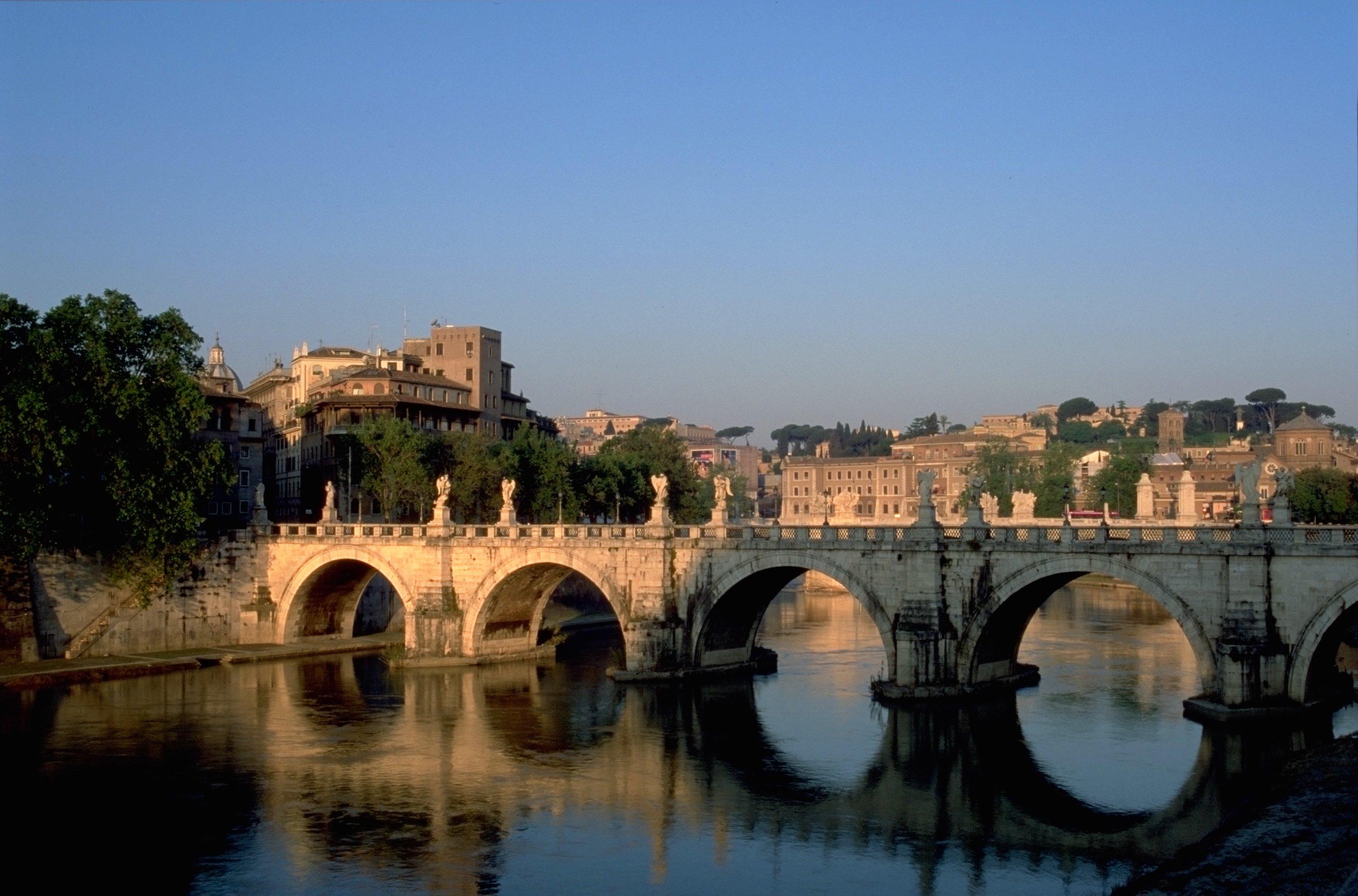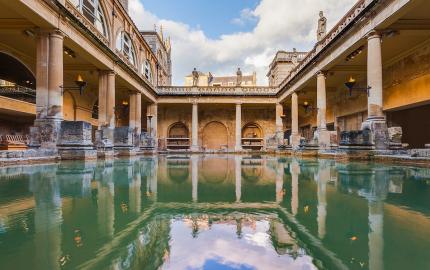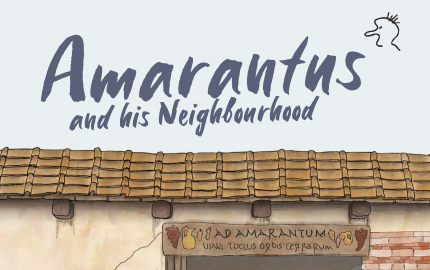With time at a premium in school, it can be difficult to cover everything in the depth we would like. In this post, Darren Lester considers how Classics can be used to enforce curriculum aims in Religious Education, Physical Education, Design and Technology, Geography, Music and Drama.

Submitted by Caroline Musgrove on Thu, 19/08/2021 - 17:47
A view of the Ponte Sant'Angelo in Rome. Originally called the Aelian Bridge, it was completed during the reign of Hadrian in 134 CE.
One of the joys of teaching Classics is that it is a broad discipline. I came to Classics first through a love of myth and storytelling, and then an interest in language, which neatly combined together. As Classicists, then, we are used to teaching history and language and ethics. However, our discipline is wide-reaching, and we can use Classics to hit several curriculum aims from other subjects.
In England and Wales, this is particularly easy when teaching primary and Key Stage 3 due to the flexibility offered by the National Curriculum. So, it’s for these younger age ranges (4 – 14) that I’m aiming this post. For those teaching Key Stage 4 and above (and in countries outside of England and Wales), these basic ideas can be adapted to fit your own curricula.
***
Religious Education/World Religions/Religion and Philosophy
Perhaps this is my bias as a mythicist above everything else, but I don’t think we can teach Classics without touching on ancient Greek and Roman religion. That’s a given. Depending on your curriculum, you might even teach about Hellenismos, religio romana, and many other reconstructed religions practised today.
But we can also use fables (which often overlap with myth due to their aetiological function, according to Blackham, 1985:186) to introduce even very young children to philosophical themes. The Aesopica (commonly known as ‘Aesop’s Fables’) contains many stories that we might not typically read to children, but which can be used to introduce philosophical dialogues:
- Mercury and the Sculptor can be used to facilitate discussion of self-esteem, hubris (excessive self-confidence, often at the expense of the gods), value and how much stock you put in what other people think of you
- Mercury and the axe is a good starting point to discuss the value of honesty (which can also be linked to CPHSE work on truth telling.) Children who are beginning to learn Latin could pair this with Corvus et Mercurius which has a plot similar to ‘The Boy Who Cried Wolf’ and is told in relatively straightforward language
- Mercury and the Traveller can be used with older learners to discuss the concept of hypocrisy, and how some people pay lip-service to their gods but do not match their words with actions (or, with younger learners, how some people might say one thing and do another)
- Hercules and the Wagoner can be used with younger children to underline the importance of trying something for yourself before you ask for help as a way of fostering independence. It can be used to discuss the efficacy of prayer with older learners – does prayer work if you’re not willing to put the work in yourself? Does God answer prayer by working through the person who prays?
For tales such as ‘The boy who cried wolf’ or ‘The slave and the lion’ (commonly told as Gellius’ ‘Androcles and the Lion’) which you might already tell in big book form or as an assembly, CSCP runs Classic Tales – a suite of resources which can be used to ground them in their classical routes. Each story contains an audio telling, a pdf transcript, an interactive transcript and an index of key themes for easy planning.
***
Physical Education
Track and field events found in the PE curriculum of most schools are a legacy of the Greek and Romans. Even younger children learning to throw and catch can mirror techniques used in javelin and discus.
- Ourania was a simple game in which a ball was thrown up into the air and two people tried to catch it. While the teacher would need to be vigilant to avoid collisions (and perhaps it might be safer if you introduce it with a child throwing and catching their ball alone!) it could be a fun activity to develop throwing and catching skills in younger children.
- Feninda was a Greek game in which a group of people threw a ball between themselves. The trick in the game was that the person throwing made it look as though they were throwing to one person, but then quickly moved to throw to another. An example of the game being played can be found here (from 1:49). This would help young children work on coordination and reflexes, and can help older children develop tactical and strategic thought.
- While a violent game, Harpastia is very much like modern rugby or American football. Schools shouldn’t play it in its original form (in which wrestling moves and other violent acts were allowed), but ‘Health and Fitness History’ has produced a school-friendly version of the game here which can be played. Due to the tactical nature of the game (where points are scored every time a member of your team catches the ball), it could be combined with a classroom lesson where the teams develop their tactics before trying them on the field.
For something less practical, you can also refer to CSCP’s Primary Ancient Greeks site, which dedicates Week 3 to the Olympics and its links to Greek religion. The site has a range of teaching ideas to make the link, and an additional 5 weeks of material you could use for different topics.
***
Design and Technology
The Romans ate a healthy diet, and we have a wealth of recipes thanks to Apicius’ 10-volume cookbook de re coquinaria. We can surmise from Pliny the Elder’s Natural History that they ate (generally) seasonally, and they relied often on edible plants. Re-creating Roman recipes can be a good way to teach children about nutrition, seasonal cooking and the varied Roman diet.
Delishably even has a recipe for dormouse, which cleverly substitutes chicken thighs for the eponymous mouse. This could be replaced by tofu for a vegetarian/vegan dormouse recipe.
***
Geography
Google Earth is a great way to allow young geographers to explore modern sites of historical interest. You can use street view to drop them into modern Rome, Herculaneum or Athens and explore ruins as they exist today using digital mapping techniques.
Having explored what the ruins look like, you could create an opportunity for links with art or DT by taking the core shape of the site and the remaining ruins, then reconstructing what the colosseum or circus maximus would have looked like.
Google Earth also has a ‘Historical Maps’ feature, in which maps of Ancient Greece and Rome (alongside other ancient civilisations which we can use if broadening our definition of Classics beyond Greece and Rome) can be overlaid on the modern map and stimulate discussion on urban expansion and sprawl.
***
Music
- The Romans had instruments very much like modern drums, timpani, castanets and French horns (tuba in Latin), which could be used in class
- There are videos across YouTube with musical archaeologists reconstructing instruments which don’t have a modern analogue. Here is an example of a cornu being played, and here is a lyre playing an original composition.
- Junk model instruments are a favorite in Early Years classrooms. As well as modelling modern instruments, you could have your children model classical instruments and create a soundscape to accompany a roman scene.
- As a long-term project, teachers of older children can split a class into groups and have them write music to an existing Ode or poem. To further link across the curriculum, learners can be taught the features of Odes and Classical poetic forms, and then write their own with musical accompaniment.
***
Drama
The origins of European drama date back to Ancient Greece, often as part of religious rites and festivals. The Greeks focused predominantly on three genres of theater: tragedy, comedy and satyr drama. (For more information on Greek theater, see this video from National Theater.)
- Split a large class in half or keep a small class together and have them collectively write a piece as a chorus. Dr Lucy Jackson has a good introductory video on the modern reception of the Greek chorus here for more information on how the Greek chorus can be used in modern pieces.
- Have groups produce a deus ex machina short scene. While deus ex machina has a negative reputation in modern theater, it was very common in the classical world and can be a way of exploring the classical relationship between humankind and the gods.
- Write a short scene focusing on the three unities (time, space, character.) Can a monologue incorporate the unities? A dialogue? How does a character relate to time and space?
- Hubris was considered one of the greatest sins in classical religion. How does hubris translate into modern theater? How do we update Minerva et Arachne for a modern audience? How does an overly confident Bake-Off contestant fair when going toe-to-toe against Mary Berry?
***
These are just a few ideas to demonstrate how Classics can work in conjunction with subjects across the curriculum to help to teach new ideas, as well as to reinforce previously taught concepts. This post isn’t designed to be an exhaustive list of things you can do, but a springboard to spark some ideas for you to incorporate into your own classroom practice.
Andreas Tille / CC BY-SA 4.0





